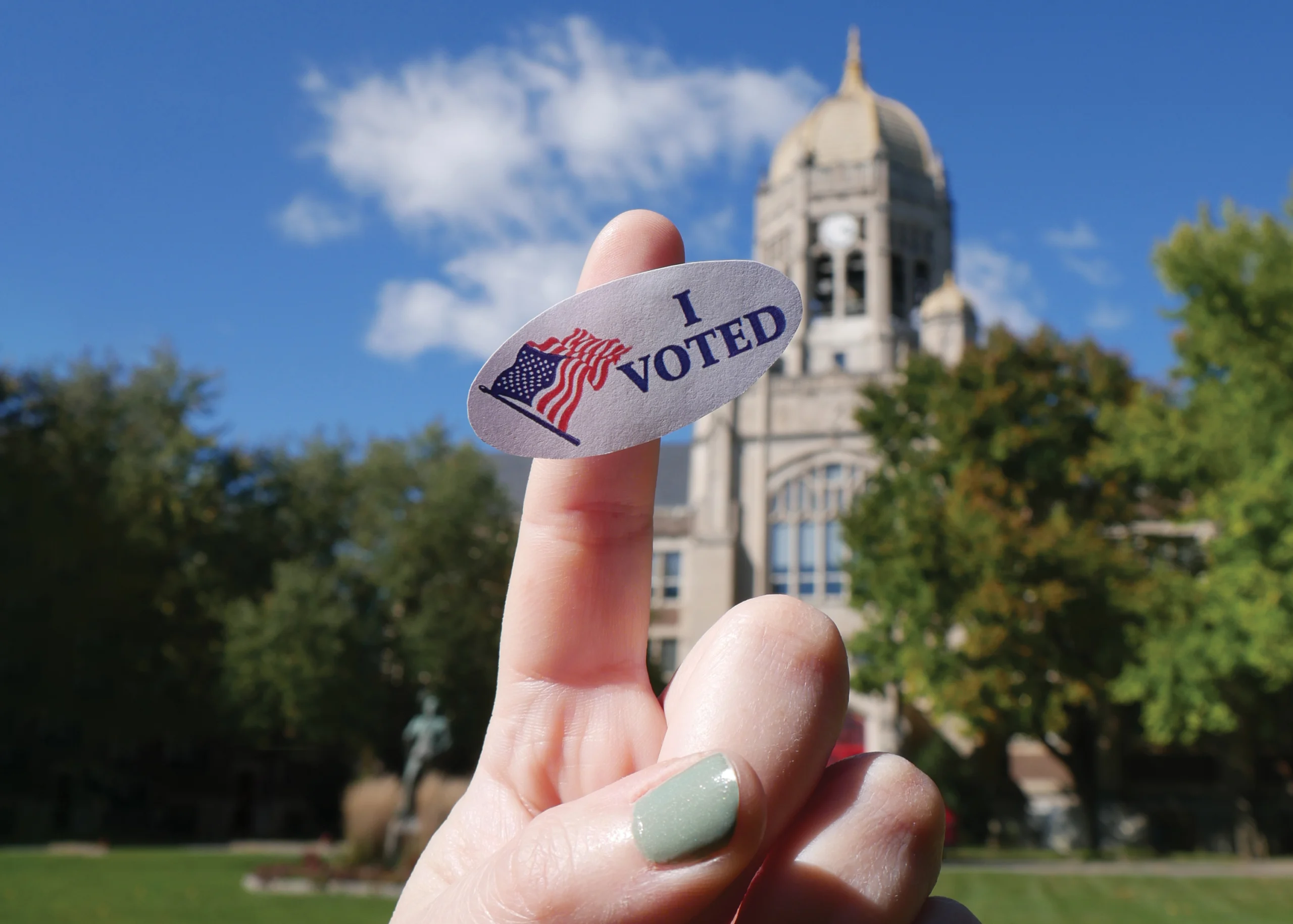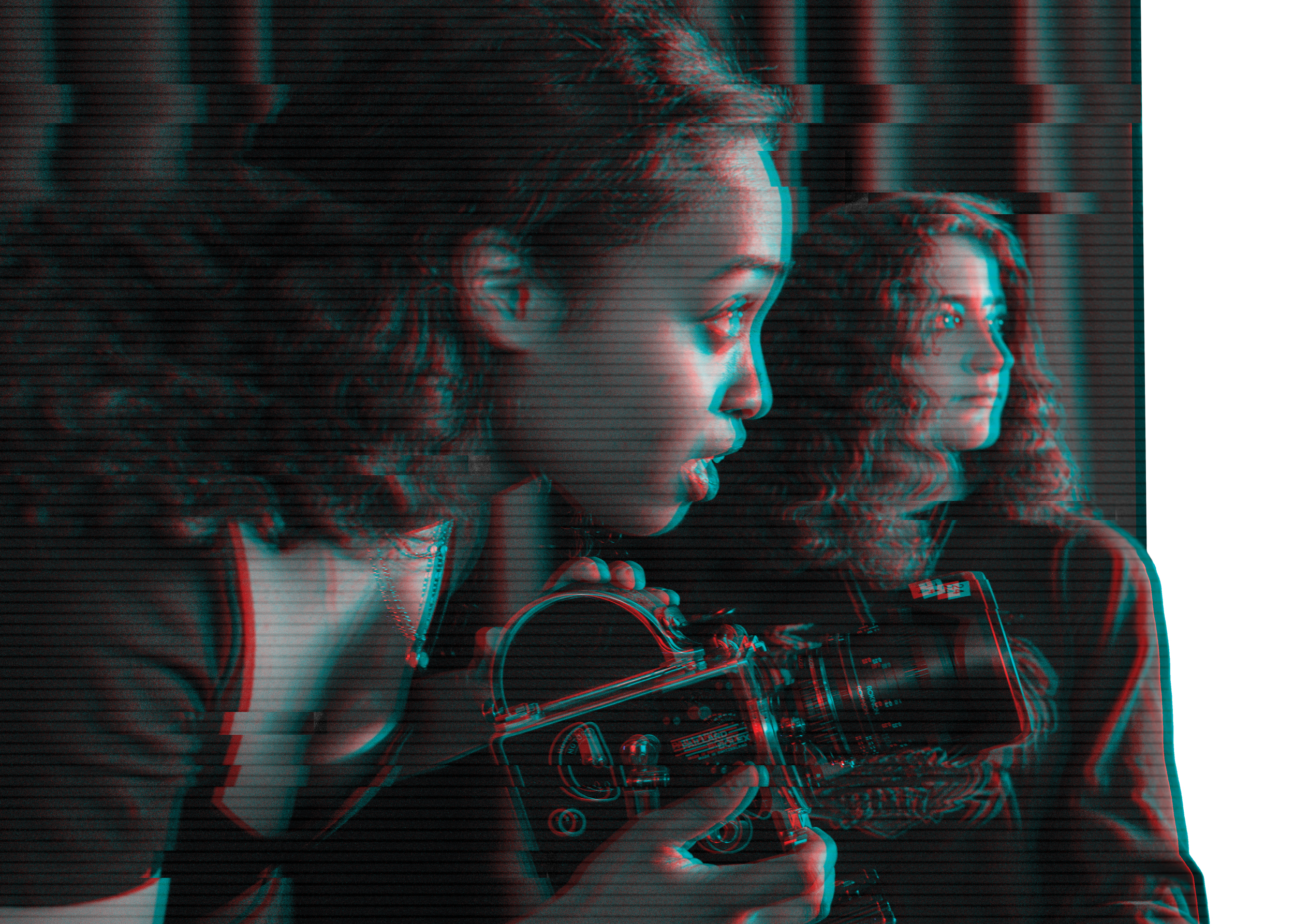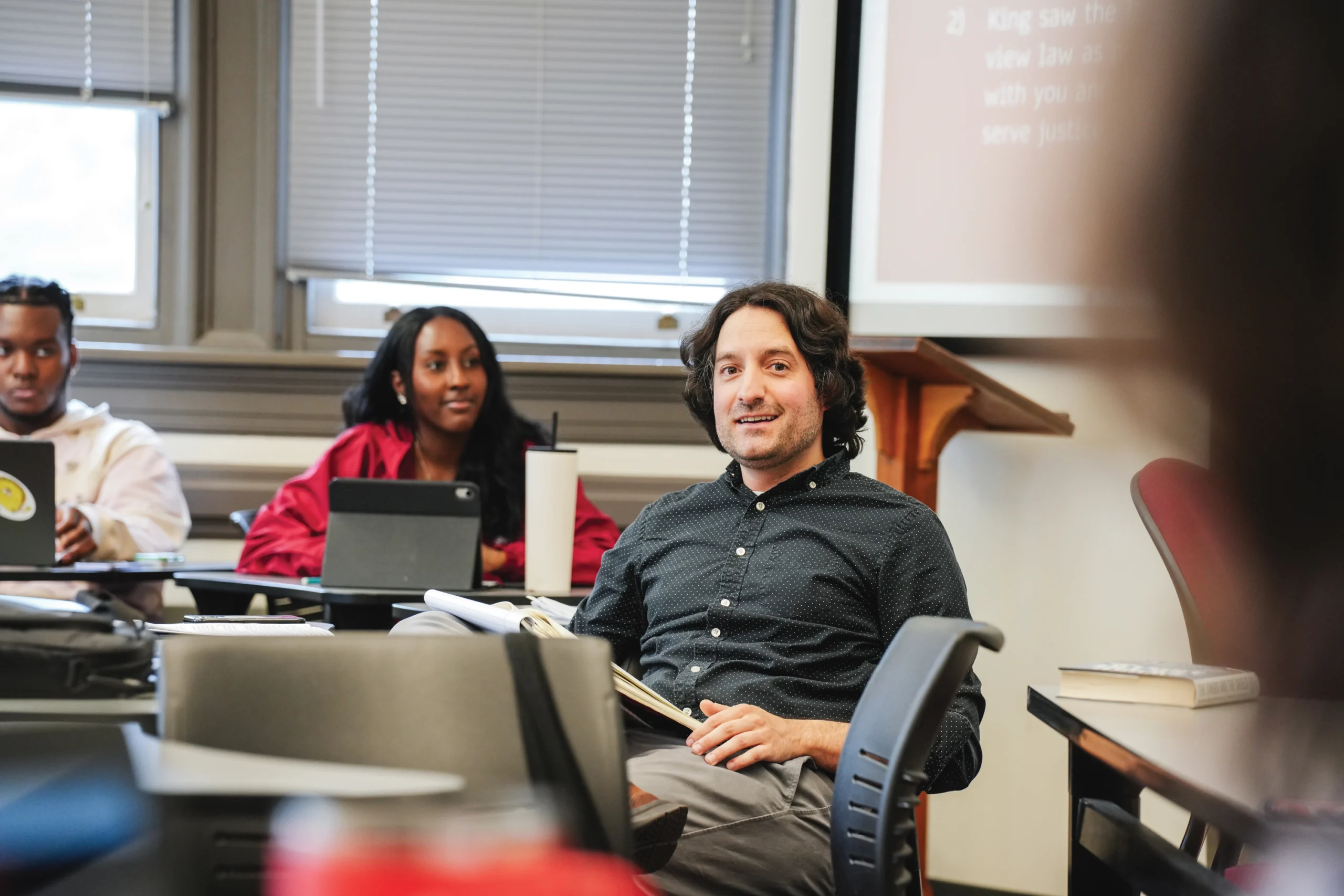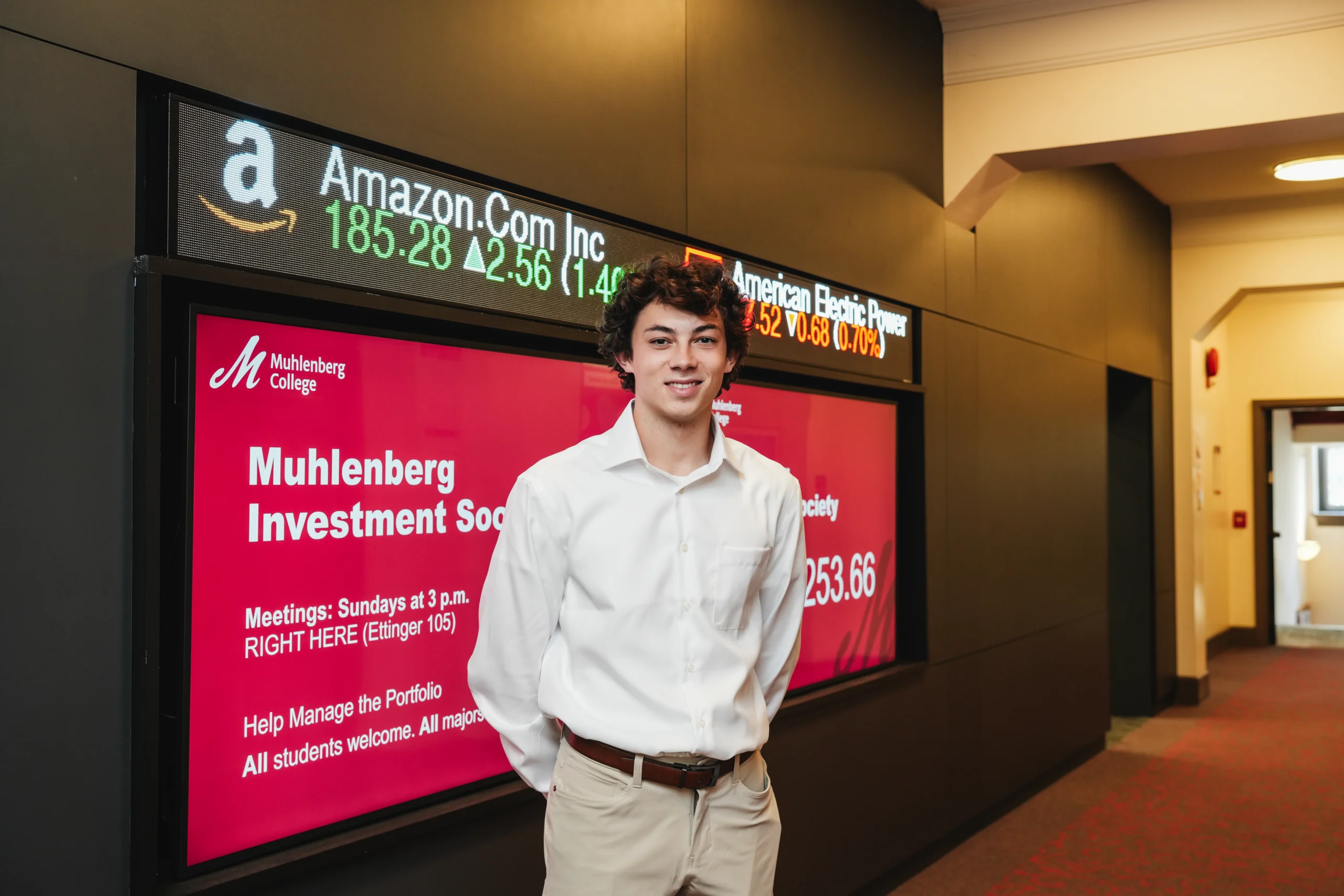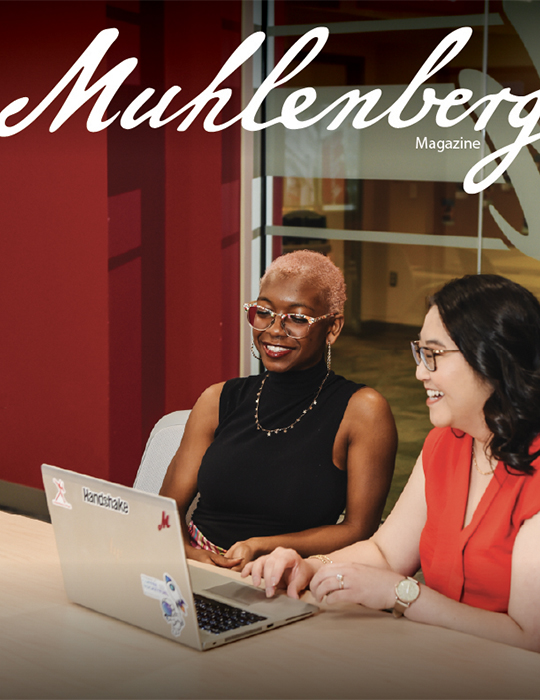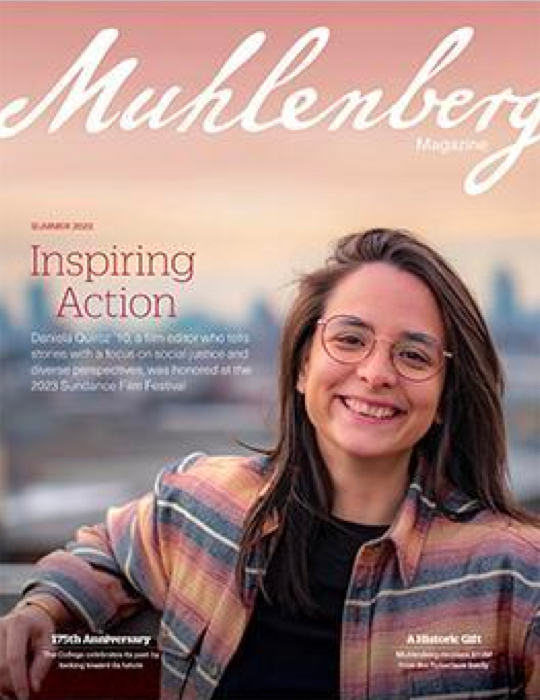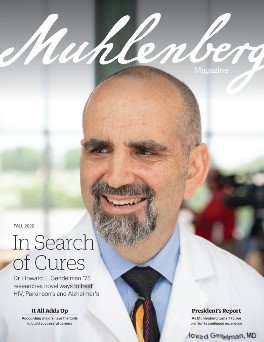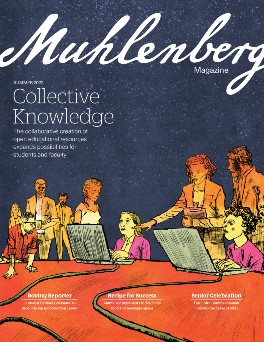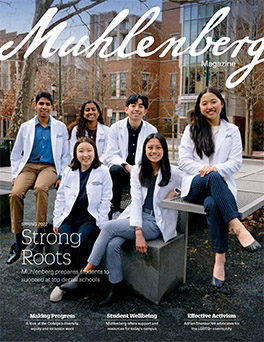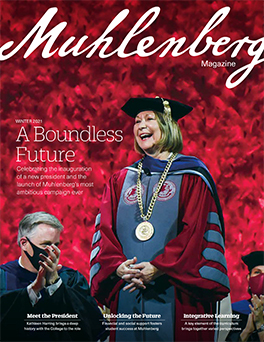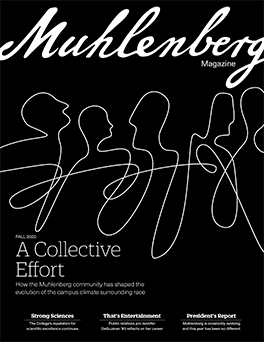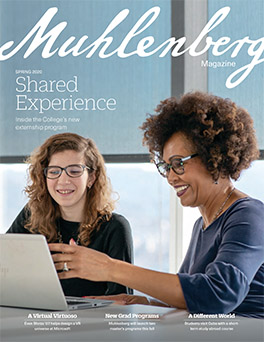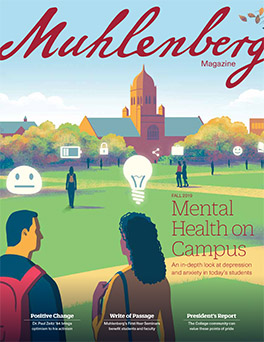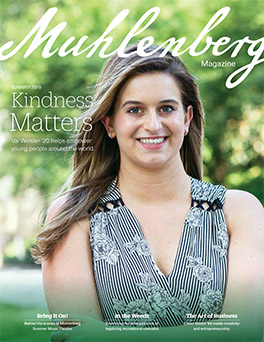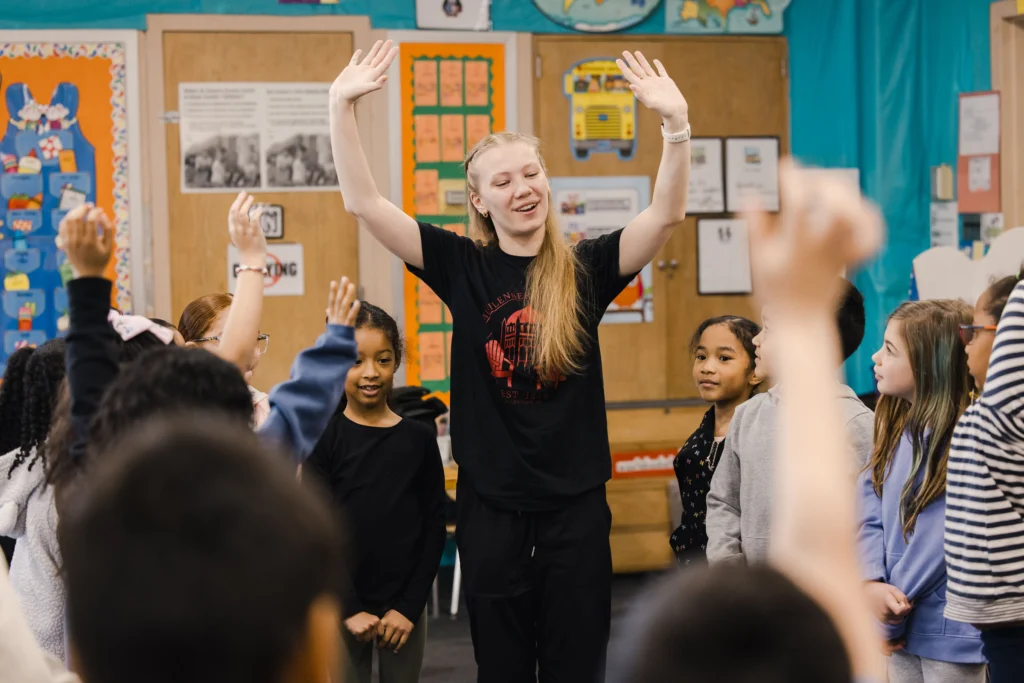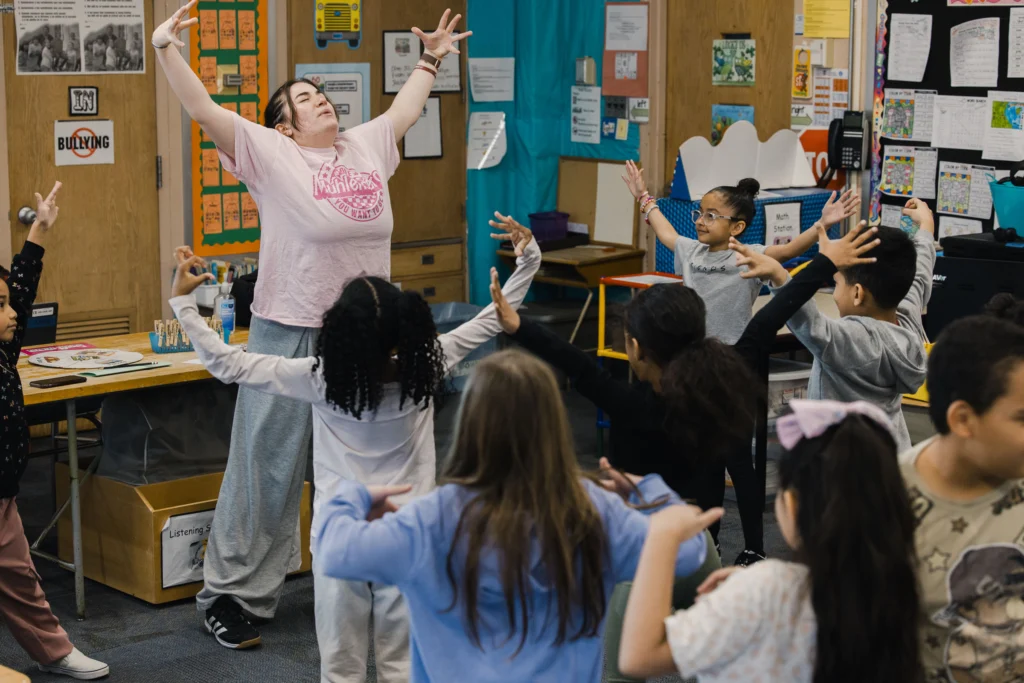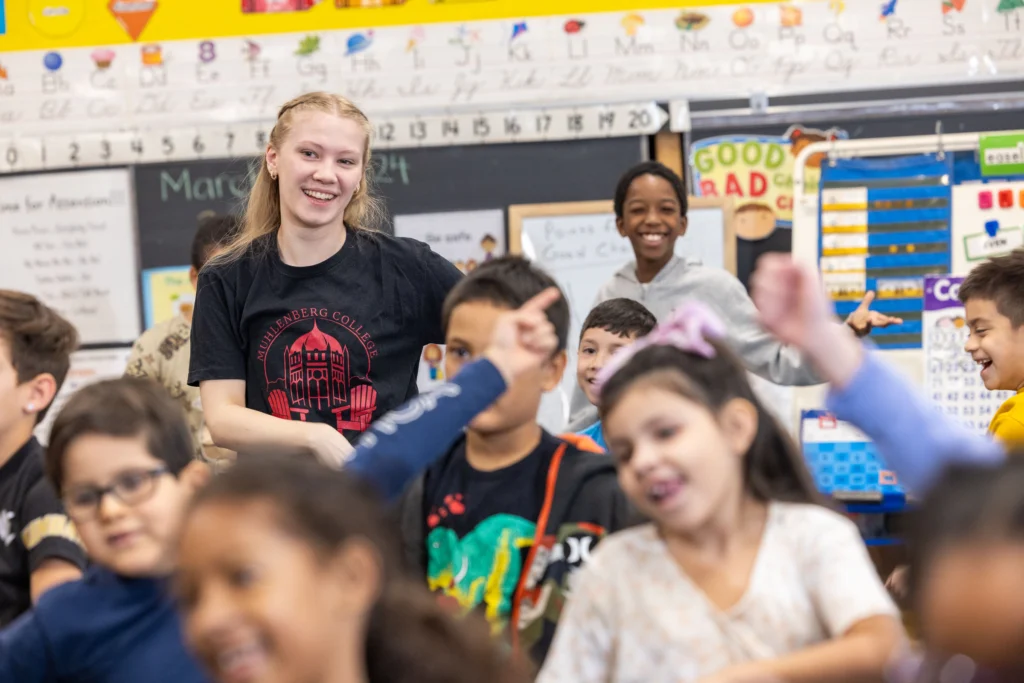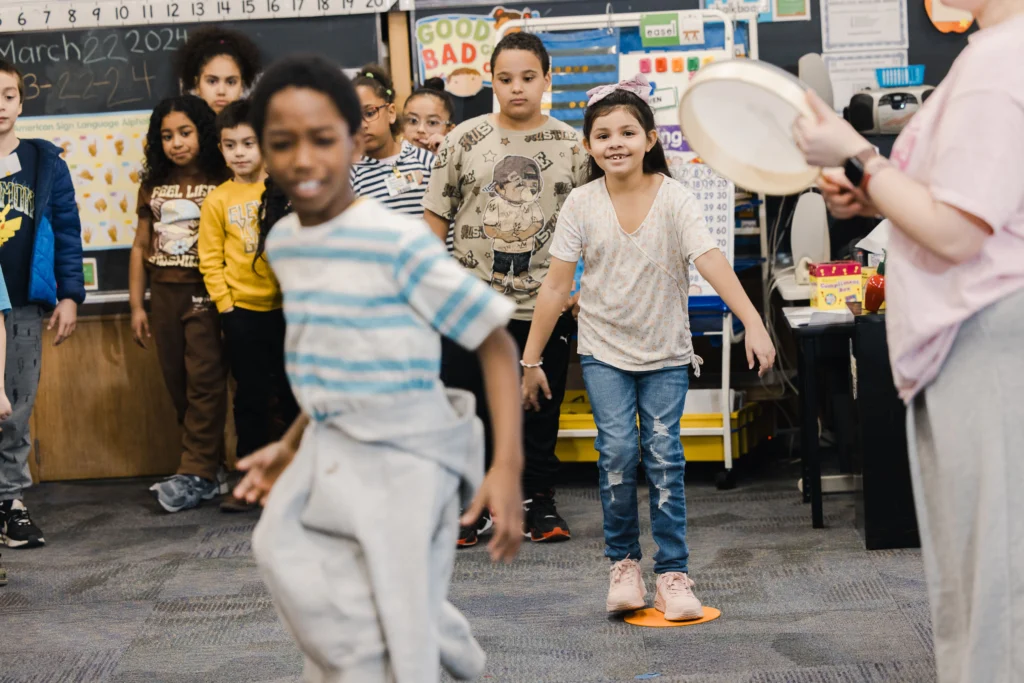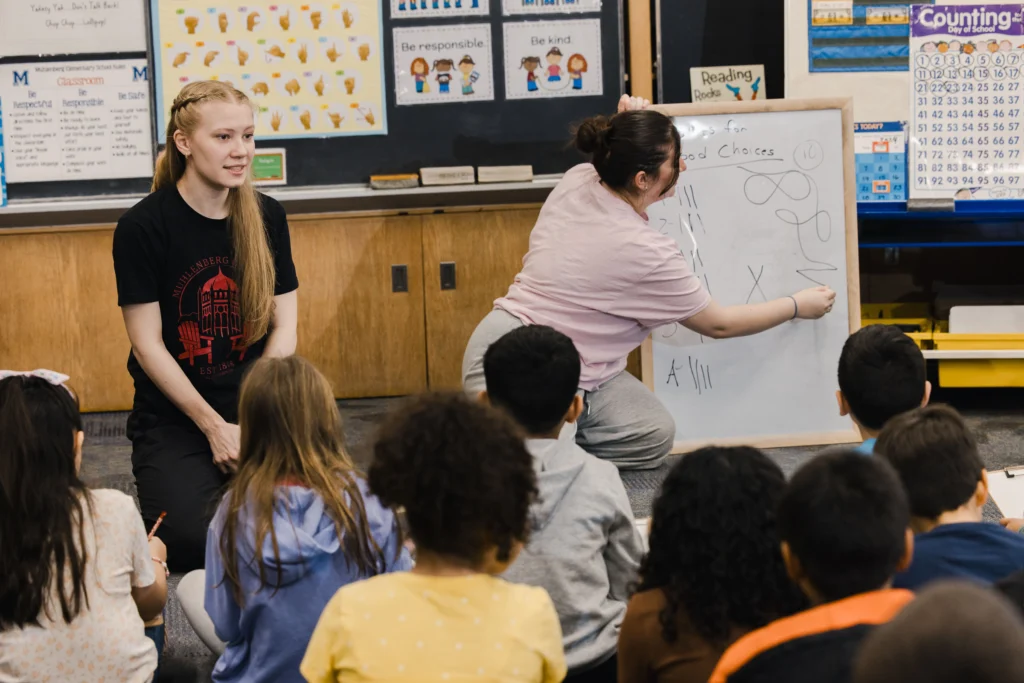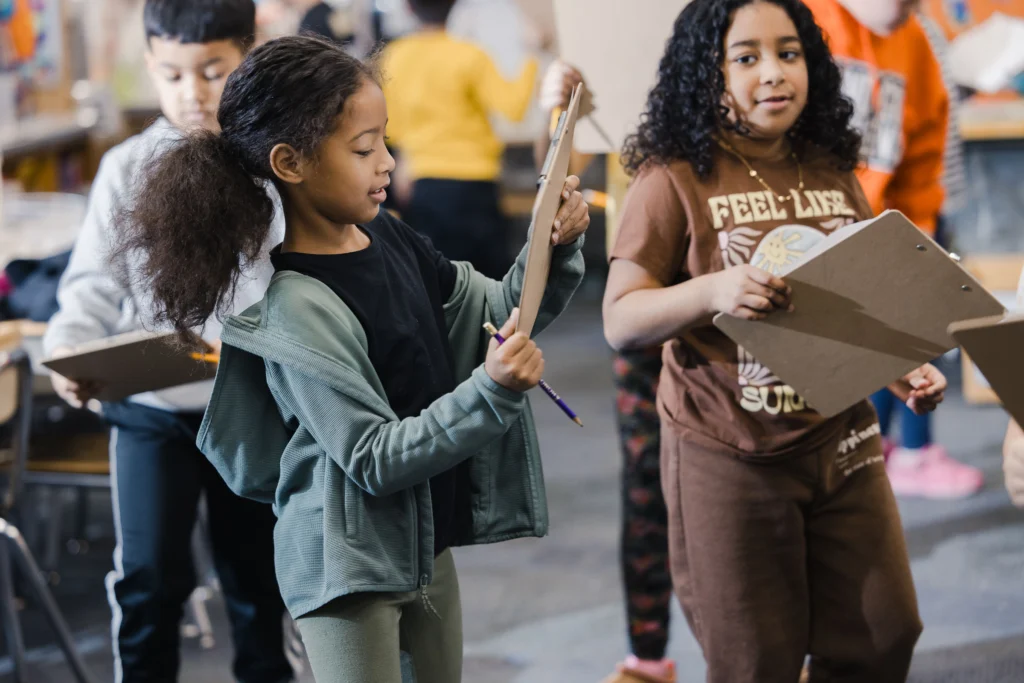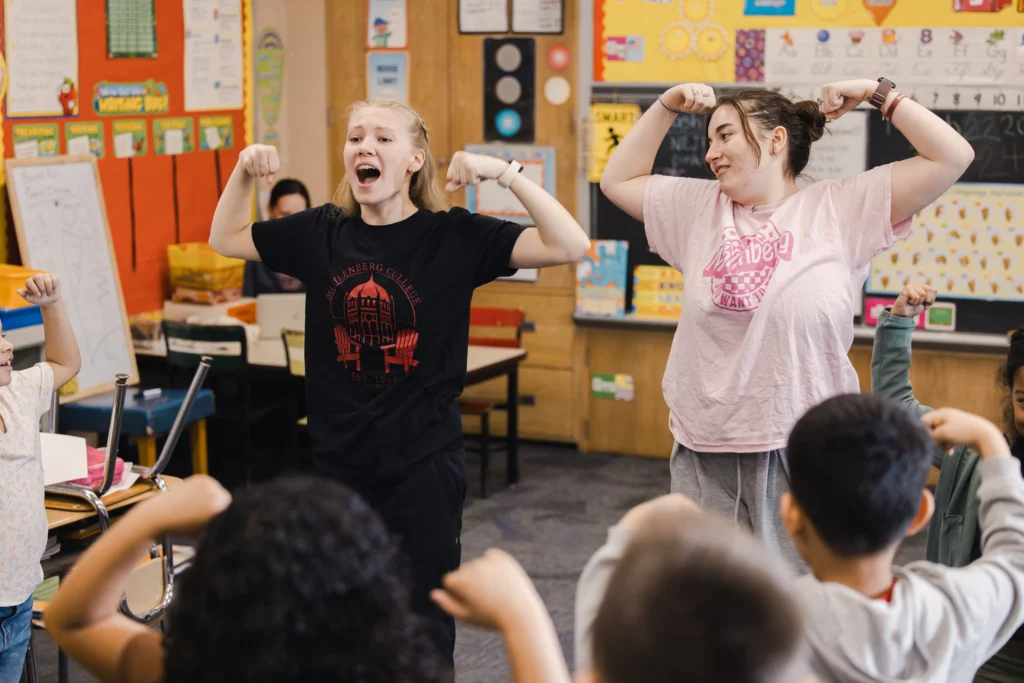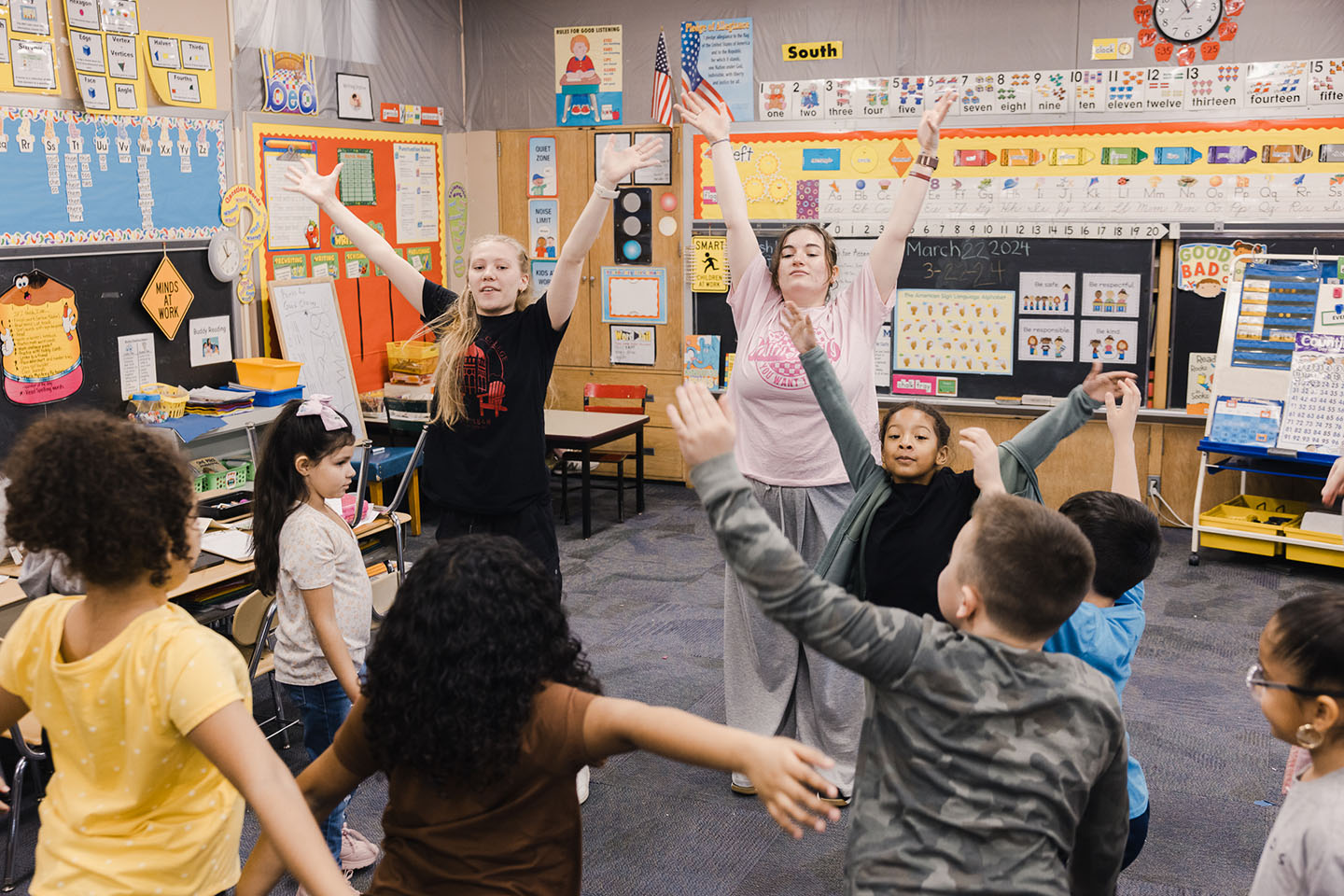
Community-Engaged Course Brings Dance to Local Elementary Students
First- and second-grade students at Allentown’s Muhlenberg Elementary School participate in 45-minute classes during the school day taught by Muhlenberg College students interested in dance education.
Room 210 in Allentown’s Muhlenberg Elementary School may look like an ordinary second-grade classroom — bulletin boards and chalkboards hang from the walls, baskets of books line the windowsill — but today, it’s full of buried treasure.
Muhlenberg College students Annalise Christie ’26 and Riley Konstance ’26 are here to teach their weekly dance class. Today’s theme is pathways, or different ways of moving your body through space. The kids have already practiced marching, galloping and sashaying in a straight line, along a curvy line and on a zigzag path. Now, they’re sitting on the floor, drawing their own treasure maps on pieces of paper attached to clipboards. They each started by making an X on their papers to “mark the spot” and are using different kinds of lines to map the way from their place on the floor to their X.
The kids finish drawing and Konstance announces, “When I start playing the music, I want you guys safely following the line that you created, that you drew, trying to get to your X. Follow your lines with your walking feet.”
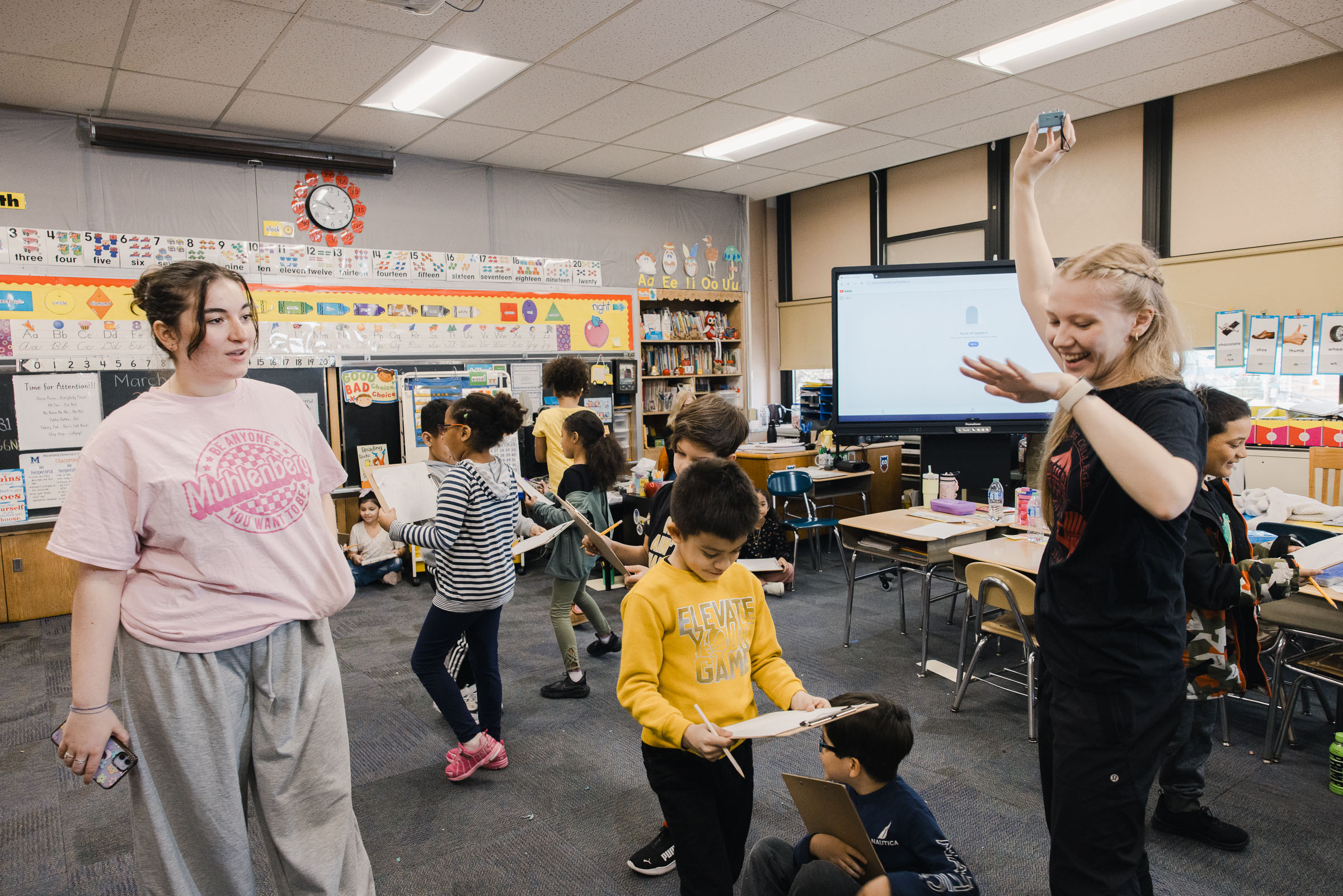
Christie holds up a speaker that soon emits the opening percussion of “You’re Welcome” from Moana, a song peppy enough to keep the kids interested but not so peppy that their walking feet will turn to running feet. The children weave around the room and one another, smiling and giggling as they look down at their clipboards and up at the space to navigate toward their buried treasure.
Christie and Konstance, both dance majors pursuing education certification, are here as part of the community-engaged course Community Dance in Practice, a partnership between the College’s Dance Program and Muhlenberg Elementary School. The course, which lasts a full academic year, is primarily fieldwork, with two student teachers offering eight weeks of 45-minute classes to a first- or second-grade classroom. There are three “blocks” during the year; students switch teaching partners and classrooms at the end of each block, allowing them to collaborate with multiple classmates and work in multiple rooms.
It’s an experience that has helped Konstance solidify her future plans: “You don’t have to be a dancer to dance,” she says. “Dance can help so much in terms of processing and creativity. It’s a new way of looking at things. My end goal is to be a dance teacher in that pre-K through 12 space.”
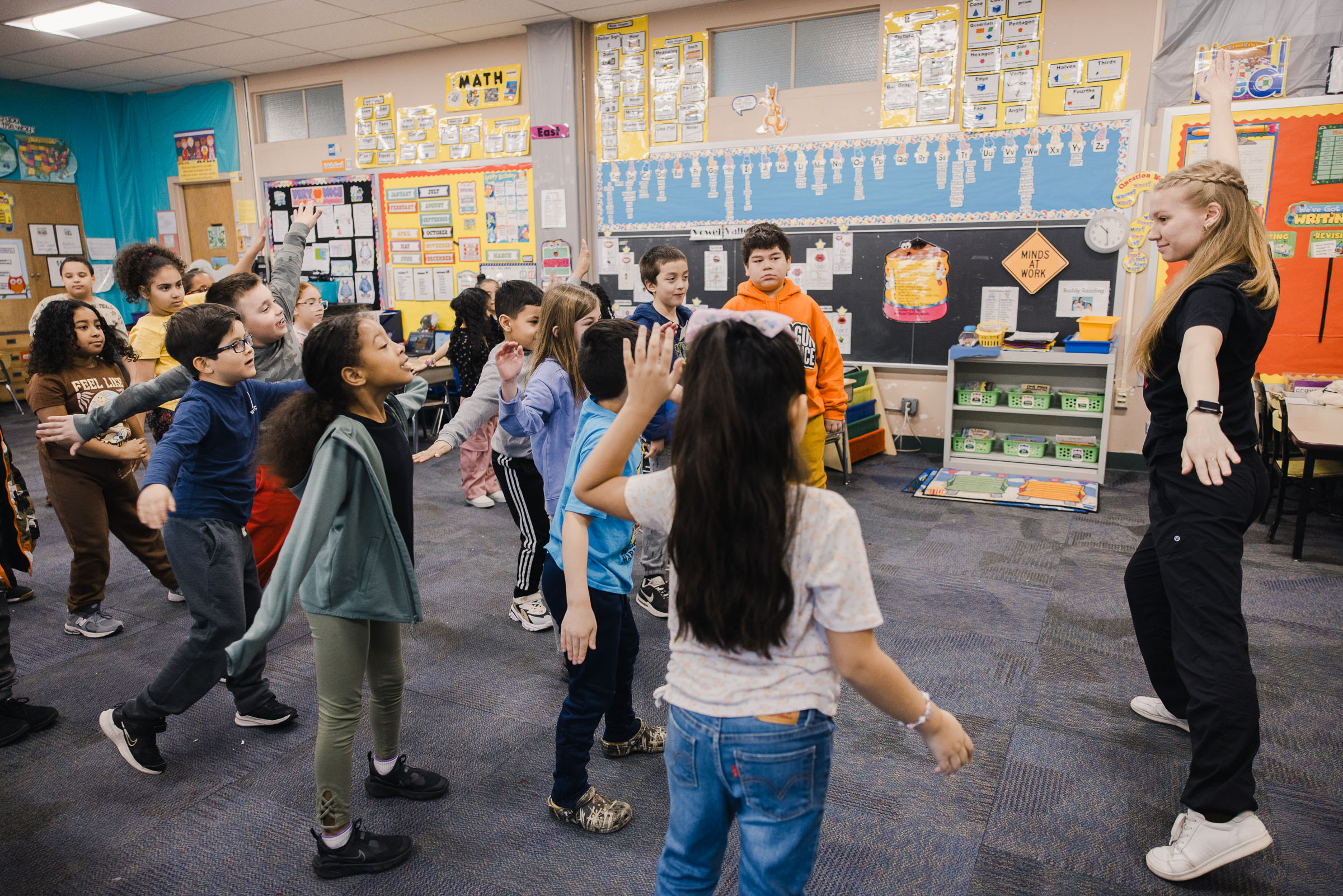
Embedding Dance in the School Day
Assistant Professor of Dance Natalie Gotter debuted Community Dance in Practice in 2021 as an integrative learning course meant to build upon Teaching Dance: Theories and Methods, a foundational course for students interested in dance education. That course, which covers lesson planning and classroom management and involves significant amounts of reading and essay-writing, culminates in a four-week placement within a Muhlenberg Elementary kindergarten classroom.
That course “is a lot of work — you’re doing so much,” says Christie, who took it in the second semester of her first year at Muhlenberg. “I had never taught dance before coming into that class. It was my first time being in charge of a classroom. All the work we did prepared me so much.”
When Gotter arrived at Muhlenberg in the fall of 2019, the culminating experience for that course was teaching in an after-school program. When the pandemic hit and her student teachers had to pivot to Zoom, she found that they were able to reach a much larger number of students than they ever had after school. Prior to coming to Muhlenberg, Gotter worked in Utah, for a program that brought dance into the school systems there. She was eager to find ways to partner with local schools to make dance programming part of the day.
“Dance as an after-school program is a really great entry point but still is not reaching all potential students. When dance is in that specific setting it’s seen more as an extracurricular or an optional thing,” she says. “I do believe that dance should be accessible. Dance is something that is comprehensive. It’s something that is substantial, similar to any other subject that students are learning in school. We also know that embodiment fosters and facilitates understanding. We can’t deny the mind-body connection, that that is another way of learning.”
Gotter worked closely with the Office of Community Engagement as she developed Community Dance in Practice and pitched it to Muhlenberg Elementary administrators, who were “super supportive … I didn’t need to do any convincing,” Gotter says. It would be an extension of Teaching Dance, whose students would now be working within the classroom, and would allow students to further develop skills like curriculum development, collaborating with co-teachers and bringing dance into variable classroom environments.
“Dance as an after-school program is a really great entry point but still is not reaching all potential students. When dance is in that specific setting it’s seen more as an extracurricular or an optional thing.”
—Assistant Professor of Dance Natalie Gotter
A Mutually Beneficial Relationship
Room 210 is Christie and Konstance’s third classroom assignment of the year — each has worked with two other co-teachers since the school year began. Each classroom is different (the layout, the space available, the personalities of the children) and each week is different (one week, Christie’s class had a fire drill; another, the kids were celebrating their 100th day of school and were especially energetic).
“I am a guest coming into the classroom. There’s this already established community that we get to enter and work with,” Christie says. “You have to be planning for so much that’s outside your control.”
“I definitely feel like from last year to this year I have grown in walking into that space and taking that space, because that 45 minutes is me and my cooperating teacher’s 45 minutes. I’ve gotten a lot more comfortable,” says Riley. She’s doing fieldwork with kids Tuesday through Saturday this semester, most of it for her education courses, but, she says, “if it wasn’t for Teaching Dance and this class, I probably wouldn’t know how to insert myself in the space and be active in the space.”
“I realized through this program that dance does not have to be a studio space. Dance does not have to be this technical thing that I have grown up with. It can just be a form of self-expression and there are so many cognitive positives that come from it. I’m very passionate about it.”
—Riley Konstance ’26
While Muhlenberg College students build teaching skills and confidence, Muhlenberg Elementary students are able to enjoy physical activity and learn new terms and concepts: “Second-grade students like to move,” says Charlene Rohn, the classroom teacher in Room 210. “My students look forward to dance time. They enjoy the change in activity and show good focus as they participate.”
Looking ahead, Gotter hopes to expand the course to reach more classrooms within Muhlenberg Elementary, which would require sufficient coverage by the college students. However, they can (and do) take the course more than once. Gotter is already allowing one of the more experienced students, Molly Layden ’24, to teach solo, broadening the reach of this year’s cohort.
The experience of bringing dance to the city’s students is a powerful one, and both Christie and Konstance plan to continue it in the future: “I realized through this program that dance does not have to be a studio space,” Konstance says. “Dance does not have to be this technical thing that I have grown up with. It can just be a form of self-expression and there are so many cognitive positives that come from it. I’m very passionate about it.”

